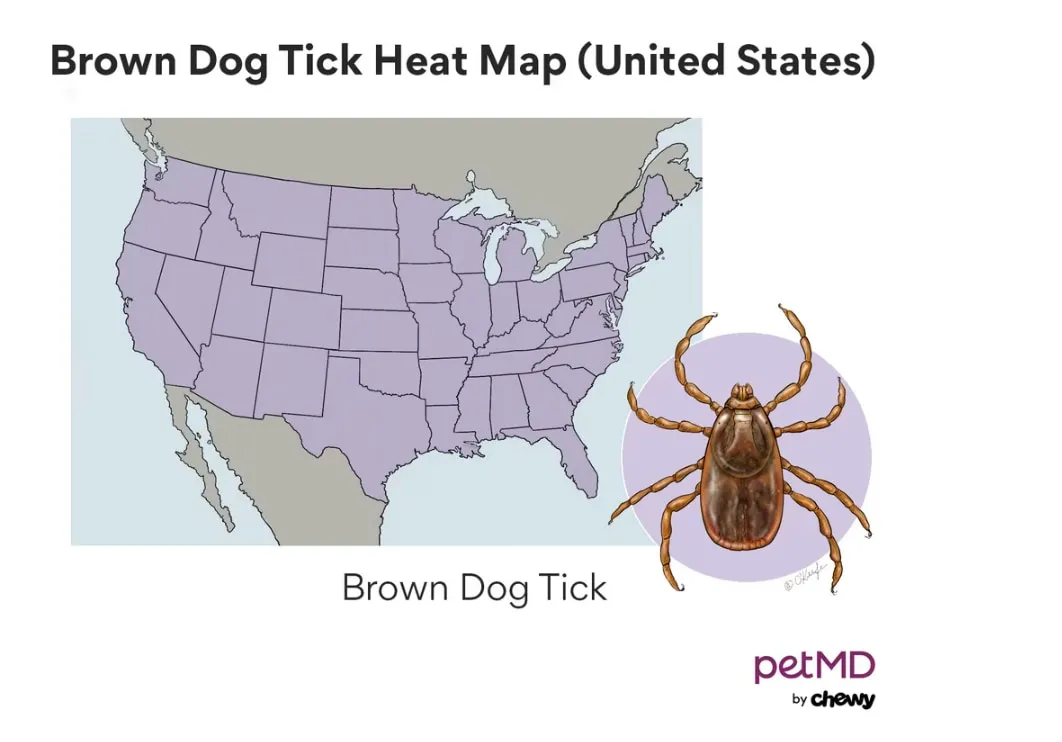Protecting your dog from fleas and ticks is a crucial aspect of their overall health and well-being. These common external parasites not only cause discomfort but can also transmit serious diseases. While many effective flea and tick preventatives require a veterinary prescription, there are also several non-prescription options available that can offer robust protection. This guide will explore the importance of flea and tick prevention, what to consider when choosing an over-the-counter product, and highlight some popular non-prescription flea and tick pills for dogs.
Why Flea and Tick Prevention is Essential for Your Dog
Fleas and ticks are ectoparasites, meaning they live on the exterior of their host and feed on blood to survive. A single bite from these pests can have significant health implications for your dog. Flea bites can lead to allergic reactions, severe itching, dermatitis, and even anemia in heavily infested animals. Ticks, on the other hand, are notorious for transmitting a range of dangerous diseases, including Lyme disease, Rocky Mountain spotted fever, Ehrlichiosis, and Anaplasmosis. Some of these tick-borne illnesses can also pose a risk to human health. Therefore, consistent prevention is key to safeguarding your dog and your family from these parasites and the diseases they carry.
 A veterinarian discussing flea and tick prevention with a dog owner
A veterinarian discussing flea and tick prevention with a dog owner
When Should You Start Flea and Tick Prevention?
Fleas and ticks can be active year-round in many climates, and they are remarkably resilient. To ensure continuous protection, it is recommended to start flea and tick prevention for your puppy as early as 8 weeks of age. Once initiated, it’s best to maintain this preventative care throughout your dog’s life, regardless of the season.
Factors to Consider When Choosing Non-Prescription Flea and Tick Pills
When selecting an over-the-counter (OTC) flea and tick medication, several factors need careful consideration to ensure you choose the most effective and safest option for your canine companion.
Oral vs. Topical Treatments
Flea and tick preventatives are primarily available in two forms: oral (chewable tablets) and topical (liquids applied to the skin). Non-prescription flea and tick pills for dogs offer a convenient option for many pet owners.
- Oral Treatments: These are often given like a treat, making them easy to administer, especially for dogs who are picky eaters or have sensitive stomachs. It’s important to monitor your dog to ensure they consume the entire tablet, as proper absorption is vital for efficacy.
- Topical Treatments: While not pills, topical solutions are another common OTC option. They are applied to the skin, usually between the shoulder blades. However, caution is needed if you have young children or other pets who might lick the treated area before it dries. Topical treatments can also be less effective if your dog swims frequently or requires frequent baths, as water can wash away the active ingredients.
Geographic Location and Local Parasite Populations
The types of fleas and ticks prevalent in your specific region can influence the best choice of preventative. Resources like the Companion Animal Parasite Council (CAPC) can provide valuable information about the parasites common in your area. Ensuring your chosen product effectively targets the local pests is crucial for comprehensive protection.
 Close-up of a tick on a dog's skin
Close-up of a tick on a dog's skin
Your Dog’s Lifestyle and Outdoor Access
Consider how much time your dog spends outdoors and in what environments. Dogs who frequent dog parks, hiking trails, wooded areas, or bushy environments have a higher risk of encountering fleas and ticks. Even indoor dogs can be exposed through fleas carried in on shoes or clothing, or from other pets that go outdoors. Veterinarians generally recommend year-round prevention for all dogs, regardless of their outdoor activity level.
 A dog exploring a grassy field
A dog exploring a grassy field
Breed-Specific Considerations (MDR-1 Gene)
Certain dog breeds, such as Collies, Australian Shepherds, and Shetland Sheepdogs, may carry a gene mutation known as MDR-1. This mutation affects how their bodies metabolize certain medications. While many flea and tick preventative manufacturers have tested their products for safety in dogs with this mutation, it’s always wise to discuss this with your veterinarian, especially if your dog belongs to a susceptible breed.
Life Stage and Weight
Flea and tick medications are formulated for specific age and weight ranges. Puppies, especially small breeds, require carefully selected products that are appropriate for their size and developmental stage. Always check the product label for minimum age and weight requirements. Most non-prescription flea and tick pills for dogs are suitable for puppies 8 weeks and older, but some may be formulated for younger pups.
 A puppy playing with a chew toy
A puppy playing with a chew toy
Pre-existing Medical Conditions
If your dog has any pre-existing medical conditions, particularly neurological disorders or a history of seizures, it is imperative to consult your veterinarian before administering any flea and tick medication. Certain classes of preventatives, like isoxazolines, should be used with extreme caution in such cases. Additionally, if your dog has had a previous adverse reaction to a medication, is underweight, pregnant, nursing, or intended for breeding, a thorough veterinary discussion is essential.
Over-the-Counter (OTC) vs. Prescription Flea and Tick Medications
While prescription medications are often recommended by veterinarians for their efficacy and safety profile, a variety of effective non-prescription flea and tick pills for dogs are available.
- Over-the-Counter (OTC) Products: These medications do not require a veterinary prescription and can be purchased online or at many pet retail stores. While convenient, it is still highly recommended to consult your veterinarian to ensure the chosen OTC product is safe and appropriate for your dog.
- Prescription Products: These require a prescription from your veterinarian and are typically seen as more potent and tailored to individual needs. They often come with a higher price point.
Popular Non-Prescription Flea and Tick Pills for Dogs
While this guide focuses on non-prescription options, it’s vital to remember that the effectiveness and suitability of any product can vary. Always consult with your veterinarian to make the best choice for your individual dog.
Credelio
Credelio is a once-monthly chewable tablet that contains the active ingredient lotilaner. It is part of the isoxazoline drug class and is effective against both fleas and ticks. Credelio begins killing fleas within four hours of administration. It is approved for dogs and puppies 8 weeks of age and older, weighing at least 4.4 pounds. Due to its isoxazoline classification, it should be used with caution in dogs with a history of seizures, epilepsy, or neurological disorders.
Credelio Quattro
Building on the efficacy of Credelio, Credelio Quattro is a comprehensive monthly chewable tablet that tackles a broader spectrum of parasites. It contains lotilaner for flea and tick control, along with moxidectin (for heartworms, hookworms, and roundworms), praziquantel (for tapeworms), and pyrantel (for hookworms and roundworms). This all-in-one solution is suitable for dogs and puppies 8 weeks of age and older, weighing at least 3.3 pounds. As with Credelio, caution is advised for dogs with neurological conditions.
NexGard
NexGard is another popular monthly chewable tablet containing the active ingredient afoxolaner, also belonging to the isoxazoline class. It provides protection against fleas and various types of ticks, including deer ticks, American dog ticks, brown ticks, and Lone Star ticks. NexGard also aids in the treatment of sarcoptic and demodectic mange. It starts killing fleas within four hours and ticks within 48 hours. NexGard is approved for dogs and puppies over 8 weeks of age, weighing more than 4 pounds. It should be used cautiously in dogs with a history of seizures or neurological disorders.
Simparica Trio
Simparica Trio is a once-monthly chewable tablet that offers broad-spectrum protection. Its active ingredients include sarolaner (an isoxazoline), moxidectin, and pyrantel. This combination effectively treats fleas, ticks, roundworms, and hookworms, while also providing prevention against heartworm disease. It can also be used off-label to treat demodectic mange, sarcoptic mange, and ear mites. Simparica Trio begins killing fleas and ticks within 12 hours and is suitable for dogs and puppies over 8 weeks of age, weighing at least 2.8 pounds. Due to the presence of sarolaner, caution is advised for dogs with neurological conditions.
Trifexis
Trifexis is a monthly chewable tablet that combines spinosad and milbemycin oxime. It is effective against fleas, hookworms, roundworms, and whipworms, and importantly, it prevents heartworm disease. Trifexis is fast-acting, beginning to kill fleas within 30 minutes. However, it does not provide protection against ticks. This medication is indicated for dogs and puppies 8 weeks or older, weighing over 5 pounds.
The Importance of Veterinary Consultation
While this guide provides information on non-prescription flea and tick pills for dogs, it cannot replace the professional advice of a veterinarian. Your vet can assess your dog’s individual health status, lifestyle, and local parasite risks to recommend the most appropriate and safest preventative treatment. They can also guide you on potential side effects and what to do in case of an adverse reaction.
References
- PetMD: Flea and Tick Season for Dogs
- PetMD: Flea Bite Hypersensitivity in Dogs
- PetMD: Anemia in Dogs
- PetMD: Why Is My Dog Itching So Much?
- PetMD: 6 Tick Diseases Dogs Can Get
- PetMD: Common Types of Ticks on Dogs
- PetMD: MDR1 Gene in Dogs
- PetMD: Dog Seizures
- PetMD: Dog Pregnancy, Birth, and Puppy Care
- Chewy: Credelio Products
- Chewy: NexGard Products
- Chewy: Simparica Trio Products
- Chewy: Trifexis Products
